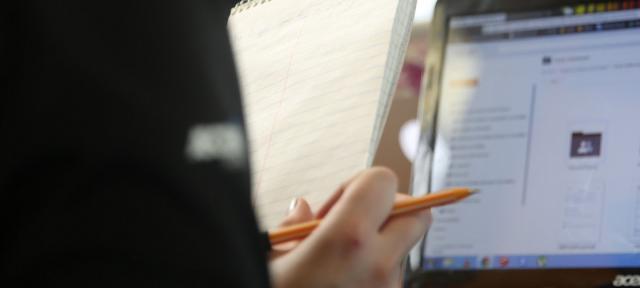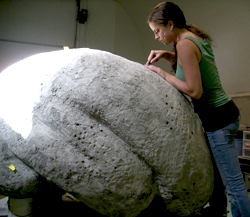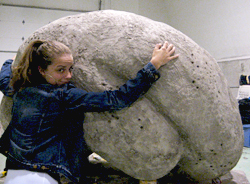NeuroSculpture

By Taliesin Nyala 07F
More on this project
Last spring, Julia Buntaine 06F spent her final semester of Div II making brains out of various materials, a project that culminated in a massive 5-foot x 5-foot x 5-foot brain sculpted from Styrofoam and concrete. As far as her Div III is concerned, the brains are just the beginning.
 |
Buntaine's Div III—titled NeuroSculpture—combines her love of neuroscience and of sculpture to make art based on neurobiological forms, such as brains, cells, and neurons.
"I love to make sculptures because it allows me to experience the neurobiological processes I've studied by creating something with my own hands," she says. "I start off in science to get my basic conception and then move into aesthetics."
Part of her inspiration comes from a fascination with forms. "Biology is made up of forms that interact with each other. In sculpture, it's putting forms together that make something larger," says Buntaine.
Her goal is not to make anatomical models, but rather to create artwork that people can relate to just as they would any other piece of art. Part of the trick, she says, is "putting my work in an arrangement or environment people can relate to without knowing anything about neuroscience."
In her work, she relies on and prefers to work with industrial materials: neurons emerge from wire and papier-mâché, brains from plaster and concrete.
"Concrete is going to be very present in my Div III because I enjoy mixing it and changing the recipe to suit my needs," she explains. "I'm making these organic forms found in nature that constantly change. In using concrete, I'm almost making them permanent, capturing them in a moment."
 |
"What do I think people can get out of my art?" she asks. "I'm enlarging these things to an extreme scale, making them visible to people who wouldn't normally be able to see them." She points out that typically only a small subpopulation ever gets to see things like neurons and cells up close. Along with that, she adds, "I try to bring in concepts that people can relate to, universal concepts such as connection, which everyone can understand."
"I love neuroscience," she says, "and using sculpture I can make it accessible to others."

